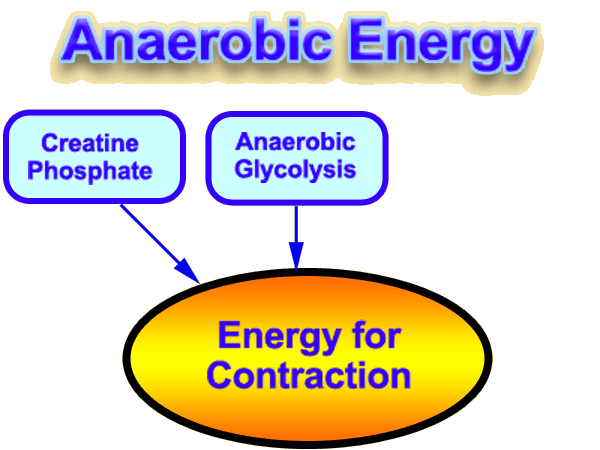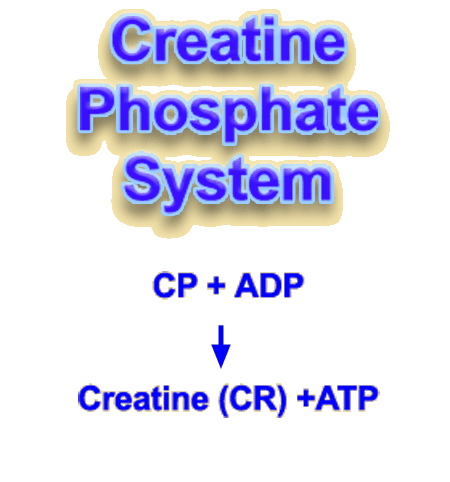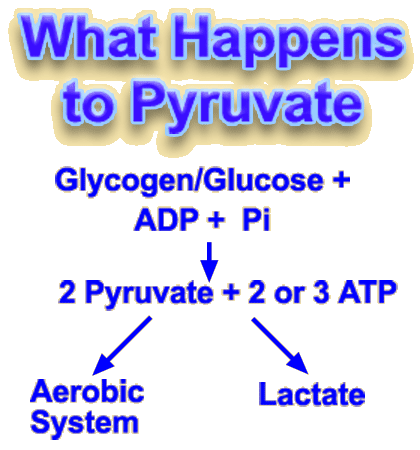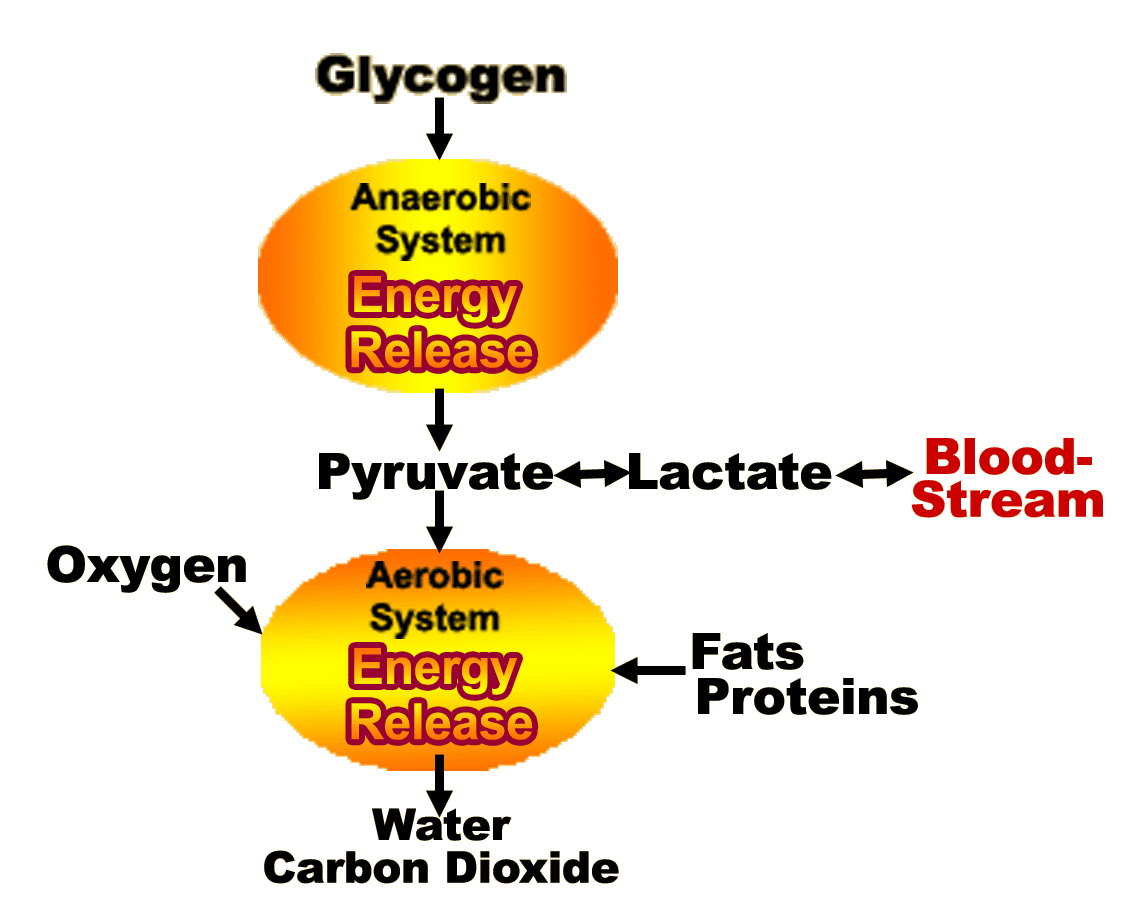Endurance Events and Lactate Testing
With Emphasis on the Triathlon
5 of 19
The origins of lactate and its implications
Anaerobic energy
Anaerobic means without air or oxygen. It is energy that can be produced without using oxygen. It is thought that early life was completely anaerobic because there was no oxygen in the atmosphere. There are two anaerobic systems that we will be concerned with, the creatine system and glycolysis.

The Creatine Phosphate system is extremely fast and it has no negative by-products. The drawback is that
there is only enough creatine phosphate in the body to last 5-8 seconds when an athlete is competing at
high intensity. Thus, it is very useful for a quick jab in boxing, a short sprint in soccer or
basketball, for jumping or a 100 m dash. It has no use in an endurance race as it will be gone after a
few seconds and if there should be a need for a sprint at the end it will not be available.

So for the initial few seconds of intense activity, the most important system is the creatine phosphate system. But after 1-2 seconds the anaerobic glycolytic system is also heavily involved. And even during the time when most of the energy is supplied by the anaerobic systems, the aerobic system is used also, supplying a small percentage of the energy. Most of the oxygen for this aerobic energy at the beginning of a race will come from oxygen already in the blood at the start.
The anaerobic glycolytic system has 10 steps but they happen very fast. The end product is pyruvate but it turns into lactate almost immediately. Pyruvate turns into lactate so quickly that some refer to this system as the lactic or lactate system. Because the creatine phosphate system plays such a small part in an endurance race when someone refers to the anaerobic system, they are nearly always referring to the glycolytic system. The term anaerobic is common in the popular literature as almost no one will use the term glycolysis.
As an aside, glycolytic means the breaking down of glucose or glycogen. The suffix "lysis" means to break down in Greek. Think of analysis which is the breaking down of information. "Gluco" means sugar in Greek.

Glycolysis starts with glucose molecules breaking down. Each molecule produces 2 pyruvate and these are either used in the aerobic process or turn into lactate. It also generates 4 ATP (2 each at steps 7 and 10) but consumes 2 of these ATP (1 each at steps 1 and 3). The net is 2 ATP. It will generate 3 ATP if the process starts with glycogen (a long chain of glucose molecules) because then there is no ATP required at step 1. This is a complicated process to produce a small amount of energy, but it is very fast. It is slower than the creatine phosphate system but much faster than the aerobic system. Despite the small amount produced for each glucose molecule it is so much faster than aerobic energy production that the total energy per unit of time is much faster during glycolysis.
For those who are technically-oriented, the following chart lists the 10 steps in the glycolytic process. From now on we will refer to this system as the anaerobic system since the creatine system plays essentially no part in the performance of an endurance athlete. Feel free to skip this chart as no coach or athlete needs to know it.

Nearly all the pyruvate produced by this process will follow one of two paths. Either it is used immediately as fuel for aerobic energy or it is converted into lactate. A small amount is converted to protein. Because most of pyruvate does not remain pyruvate for more than a few microseconds and nearly all of it is consumed immediately or turned into lactate, we will seldom discuss pyruvate but focus on lactate. The conversion of pyruvate to lactate is very simple: Pyruvate +2 H <=> Lactate.
Notice that when lactate is produced it takes hydrogen ions out of the system. So contrary to a lot of myths, the production of lactate from pyruvate lowers the acidity of the muscle. But the glycolytic process produces hydrogen ions and when lactate is produced it uses some of these hydrogen ions, but not all. The overall effect is to cause acidosis.
The production of lactate has one very big negative side effect. These hydrogen ions (H) produced by the glycolytic system cause acidosis in the muscle fibers. This acidosis slows down energy production, inhibits muscle contraction and may damage the cell structure. Hence, glycolysis or anaerobic energy can only be used in small amounts or if used in large amounts, only for a very limited time. We will see that this property of glycolysis is what limits a triathlete and must be controlled if the triathlete is to maximize his or her performance.

The amount of pyruvate that gets converted to lactate will be one of the key steps in assessing all the energy systems. It depends on the conditioning level of the athlete, the type of physical activity, the intensity and duration of the exercise and environmental conditions. One of the keys in trying to assess the strength of the glycolytic system and the amount of acidosis that is present in the contracting muscles is the level of lactate that is present. Low levels of blood lactate indicate a lower level of muscle acidosis while high levels indicate a high level of acidosis. So the speed at which the muscles can produce lactate is correlated with the potential acidosis in the muscles.
Fate of Lactate - lactate can be reconverted back into pyruvate in the same cell, enter the bloodstream where it may go to another muscle to be turned back into pyruvate for aerobic energy or possibly be converted back into glucose in the liver. It can also migrate to neighboring cells without entering the blood stream. The process by which lactate moves around the body is called the Lactate Shuttle.

Continue on to module 6 which discusses aerobic energy.
